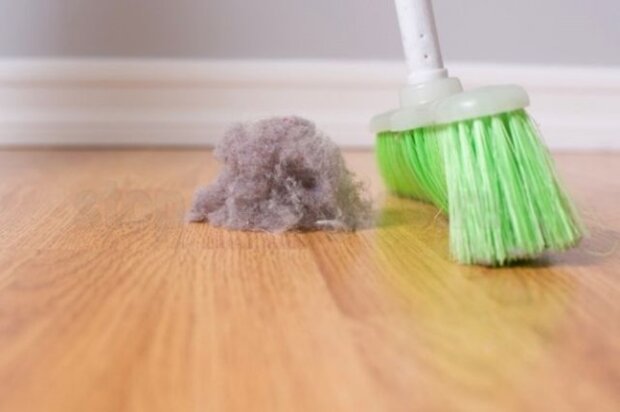Where does household dust come from? Dust consists of tiny particles with a diameter of up to 0.1 mm that settle in homes through windows and ventilation, as well as on shoe soles.
The residents themselves become effective "producers" of dust as it contains flakes of skin, dandruff, and pet hair.
It can also contain insect remains, feather fragments, fungal spores, and particles from various construction materials. Daily, we inhale 30 to 60 mg of dust into our bodies.

Recently, studies have been conducted to detect dust from 35 countries around the world.
Depending on the city, it may contain elements such as arsenic, lead, chromium, nickel, manganese, and other substances that are harmful to the body. Dust mites, which feed on dead skin cells, also pose a health threat.
Their excretions often cause allergies and asthma. Therefore, people with such conditions should approach the battle against dust seriously.
How to conquer dust:
Don't create favorable conditions for dust.
Minimize the number of dust-collecting items in your home. Various figurines, vases, travel souvenirs, soft toys, and other decorations may be visually pleasing, but they also accumulate a lot of dust, requiring time and effort to combat.

Also, remove items that you don't use daily, such as cosmetics, perfumes, jewelry, dishes, and stacks of paper. Carpets are known to be major dust collectors. If you can't get rid of them, regular thorough cleaning will be necessary.
Perform more frequent damp cleaning.
This advice has stood the test of time and is still relevant today. Damp cleaning has not only aesthetic but also medical significance, especially if you suffer from allergies and asthma. Arm yourself with a cloth, preferably made of microfiber.
Dry cleaning can easily gather all the dust, and then damp cleaning will ensure the results are preserved. Additionally, for dealing with dust, it's convenient to use a fluffy broom with a funny name like "pipidastre."
Its synthetic fibers attract particles rather than just sweeping them away, significantly speeding up cleaning even in hard-to-reach places.

Choose efficient household appliances.
Vacuum cleaners equipped with a water filter can handle dirt and purify the air. The dust is sucked in and settles in a container with liquid, losing all chances of escaping back into the air.
Some models even have additional attachments for floor mopping, making cleaning faster.
Steamers or steam cleaners can refresh furniture, cushions, and bulky household textiles such as curtains and net curtains. By the way, they can easily be used to clean floors and other surfaces.
Use specialized cleaning products.

For example, furniture polish can be used to clean both floors and furniture. It serves as a kind of antistatic, repelling dust and allowing surfaces to remain clean for longer. Regular laundry conditioner is also suitable for cleaning.
Simply mix one part of the product with three parts of water. By the way, the same "cocktail" can be poured into the water compartment of a robot vacuum cleaner. In its pure form, conditioner is useful for wiping TV screens—it cleans the surface well and leaves no streaks.
Stock up on vacuum bags and storage cases
Vacuum storage bags are great for storing off-season clothing, blankets, and pillows. This solution not only keeps the air cleaner, but also saves space in the closet. Special cases are suitable for coats, jackets, suits, and other clothing that requires careful care.
Humidify the air. The quickest way to combat dust is to purchase an air humidifier. Pay attention to the coverage area of the device. Advanced models have additional functions such as air purification and ionization.

You can also increase humidity in your apartment using simple household methods. For example, after taking a shower, leave the bathroom door open, hang wet laundry on radiators, or place a bucket of water near the heater.
A pleasant bonus is that humidifying the air has a positive effect on the condition of your skin and hair, especially during the heating season.
Engage in gardening. Green plants purify the air and enrich it with oxygen. They also act as natural humidifiers. Choose indoor plants that require regular misting and frequent watering to serve this purpose.

Their leaves will release more moisture into the air. Don't forget that plants on windowsills also need periodic dusting. Pursue the care of indoor plants by observing their watering and misting needs.
Their leaves will release more moisture into the air. Plants on windowsills also require periodic dusting as part of their care routine.
Read more: Creative reasons to write down your dreams: finding inspiration and exploring the subconscious mind
As we wrote earlier: Relaxing evening habits that truly help you recharge and be effective the next day





































